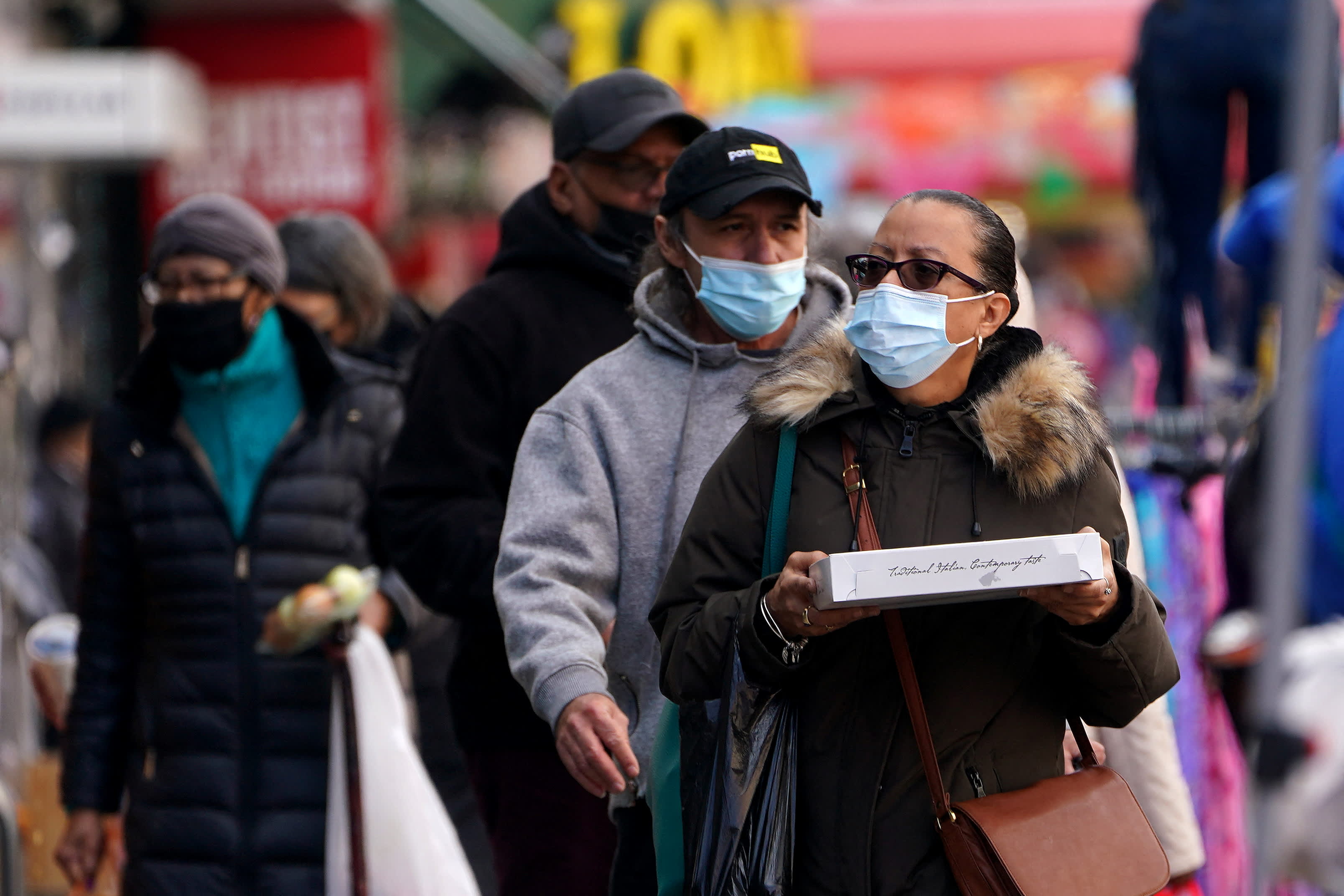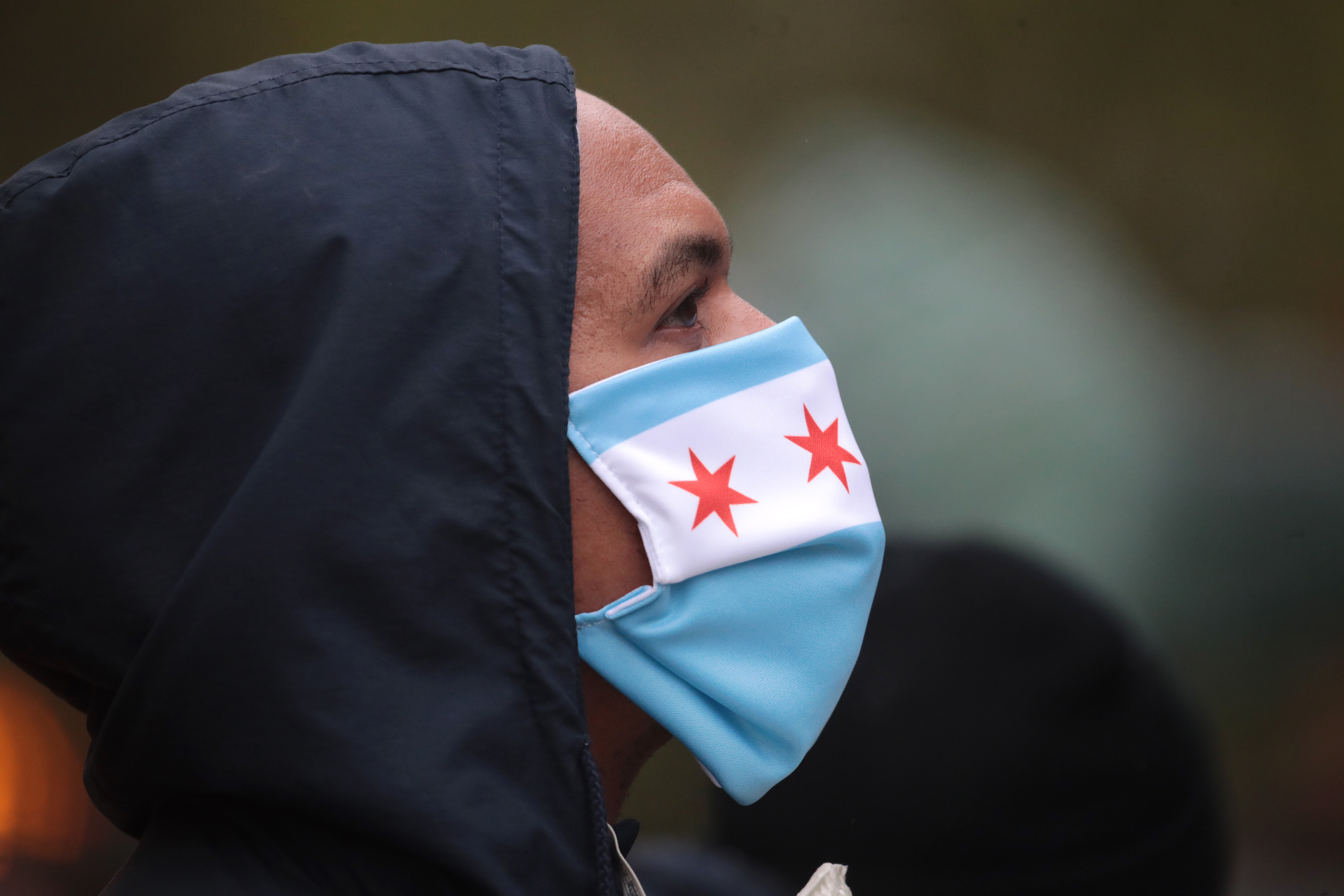As cases of several different respiratory illnesses continue to climb, health officials and doctors are encouraging residents to take precautions and to take sickness seriously, getting diagnosed and treated as early as possible.
Flu cases in the U.S. are on a rapid incline in recent weeks, according to CDC data. COVID cases are also climbing quickly, including in Illinois, and cases of RSV have been ravaging health care systems for several weeks.
"(We're) having patients coming in with respiratory symptoms, trouble breathing, high fevers," Dr. Mia Taormina, who works at Chicago's Duly Health and Care, said. "We really do'nt know if it's going to be flu, COVID or RSV, because we're seeing all of them at the same time."
Taormina says that the rapid rise in flu hospitalizations has been especially concerning, as those numbers had declined significantly during the height of the COVID pandemic.
Feeling out of the loop? We'll catch you up on the Chicago news you need to know. Sign up for the weekly Chicago Catch-Up newsletter here.
Dr. Sharon Welbel of Cook County Health voiced similar concerns, citing CDC charts that show breathtaking increases in flu cases in recent weeks.
"It is straight up right now for influenza, and I don't know when it's going to peak," she said.
In parts of the Southern Hemisphere, including Australia, the flu season was especially problematic for children, and while 14 children have died of flu nationwide so far this season, doctors fear that the numbers could rise.
"The thing that hurts me as a pediatrician is when we see kids get hospitalized, and when we see them die from vaccine-preventable diseases," Chicago Department of Public Health Commissioner Dr. Allison Arwady said.
There are several keys to helping stem the rapid increases in cases of all three illnesses. For starters, getting vaccinated against flu and COVID is critical, as both have been shown to be effective in preventing serious illness and hospitalization.
"The most important thing right now is that everybody gets vaccinated," Welbel said.
Taormina says that only one-in-three Illinois residents age 65 and older have received the new bivalent COVID boosters, a number she says has to come up in order to prevent serious illness and to help limit spread of the virus, which could cause new variants to rise up.
Doctors remind the public that it takes up to two weeks for the immunity response to kick in for both flu and COVID vaccines, so they're encouraging individuals to get shots soon so that they can be protected this holiday season.
If you get sick, doctors say that getting tested, figuring out which illness you have, and taking steps to treat the illness, are all critical.
"If you're feverish, having headaches, respiratory symptoms and cough, don't wait it out," Taormina said. "Contact your provider in case you qualify for certain treatments."
For flu patients, antivirals like Tamiflu can only be prescribed in the early stages of the illness. The same holds true for Paxlovid, an antiviral that can help high-risk COVID patients.
The director of the Centers for Disease Control and Prevention on Monday encouraged the use of masks to help reduce the spread of such viruses during the holiday season.
"One need not wait on CDC action in order to put a mask on," CDC Director Dr. Rochelle Walensky said. "We would encourage all of those preventive measures — hand washing, staying home when you're sick, masking, increased ventilation — during respiratory virus season, but especially in areas of high COVID-19 community levels."
The situation is troubling across nearly the whole country, with 47 states listed in either the "high" or "very high" categories when it comes to respiratory illnesses, according to CDC data.
While COVID cases have jumped in recent weeks and flu hospitalizations have soared to a level not seen in a decade, there appears to be some progress - at least relating to one illness.
As people begin to make holiday plans, and take the viruses' spread into consideration, here's the latest data on each virus in Illinois and the broader picture nationwide.
COVID
Nationwide, average daily COVID cases have risen 16% over the last two weeks, according to NBC News' tally. The CDC recorded a nearly 18% increase in average daily hospital admissions due to COVID from the week ending Nov. 22 to the week ending Nov. 29.
COVID cases have certainly risen across Illinois in recent weeks, too. However, the situation doesn't even compare to the rapid surge experienced earlier this year - when Illinois saw as many as 250 cases per 100,000.
Following an uptick in COVID metrics, dozens of Illinois counties are at an elevated COVID community level status, including 12 that have been shifted to "high." In those areas, masks are recommended under state guidelines.
In addition, 51 counties, including Cook, Lake, DuPage and McHenry, have reached "medium" COVID community level status, data revealed. At "medium" status, anyone at high risk of getting seriously ill should wear a high-quality mask or respirator, such as an N95, when in public indoors. Additionally, if you have contact with someone else at high risk, consider self-testing to detect infection before contact, according to the CDC.
Case numbers have been on a steady rise for the past few months, with the seven-day case rate almost doubling between October and December. The seven-day rolling average was 12.2 cases per 100,000 residents on Oct. 3 before increasing to 17.1 a month later and 23.4 by Dec. 3.
When it comes to another key metric, hospitalizations, the numbers have more than doubled since the start of October. A total of 73 daily COVID-related hospital admissions were reported on Oct. 1 compared to 154 admissions on Dec. 1, according to data from the Illinois Department of Public Health.
ICU availability has dwindled as cases have increased, with 16% of beds available as of Dec. 2, a 5% decrease from the 21% availability on Oct. 1, data showed.
Flu
Flu hospitalizations are at a decade high across the country, with a top CDC official saying this year's flu season is "off to a rough start."
Approximately 78,000 people have been hospitalized with the flu since the start of October. Around 19,500 were newly hospitalized in the week ending Nov. 27, according to data from the Department of Health and Human Services — nearly double the number of flu hospitalizations reported the week prior.
The CDC estimates that the flu has already caused 8.7 million illnesses since Oct. 1. That's close to the 9 million cases estimated for the entire 2021-22 flu season.
Flu deaths are already approaching last season's total as well. The CDC estimates this year's toll to be at least 4,500 since Oct. 1, compared to 5,000 in all of last season.
The spread of the flu has taken a serious turn statewide, with Illinois now being listed among the states with "very high" flu activity. Activity was considered "high" statewide as of the week ending Nov. 5, according to the CDC's Weekly Influenza Surveillance Report. Indiana was listed at "medium," while Wisconsin was said to be "low" for flu activity.
Indiana is now considered "very high" while Wisconsin is listed as "high."
RSV
Cases of RSV have most likely peaked in some parts of the country, like the South and Southeast, and plateaued in others, such as the Midwest and New England, according to Walensky.
Nationally, the number of positive weekly RSV tests fell from more than 19,000 in the week ending Nov. 12 to around 7,500 in the week ending Nov. 26. In Illinois, declines in both the numbers of positive antigen and PCR tests have been reported.
When it comes to antigen tests for RSV, 28.4% of tests conducted were said to be positive the week of Oct. 15, according to data from health officials. From that point, a decline followed, with 26.5% of positive tests reported the week of Oct. 22 and 14.5% the following week, Nov. 5.
PCR tests followed a similar pattern, although the number of positive results wasn't as high. As of the week Oct. 8, just under 14% of tests were positive before a significant increase to 22.8% the following week. Progress was reported in the subsequent weeks. As of Nov. 12, 16.1% of PCR tests were deemed positive, CDC data showed.




